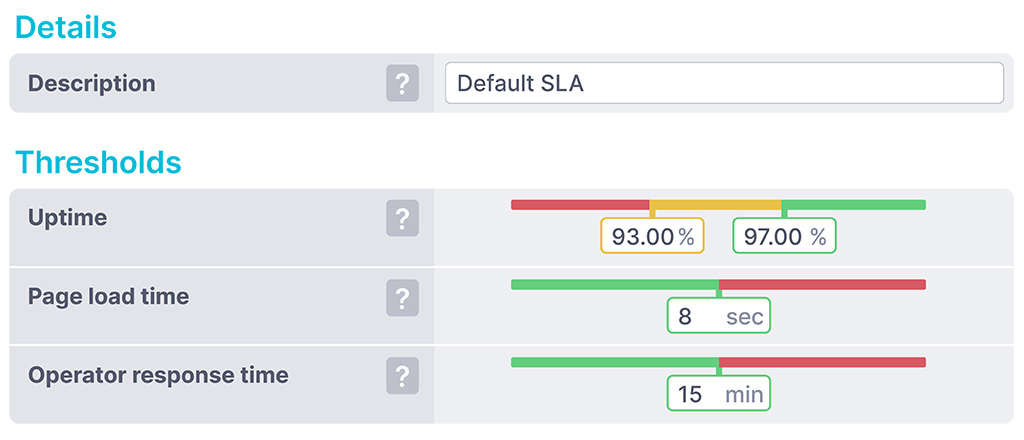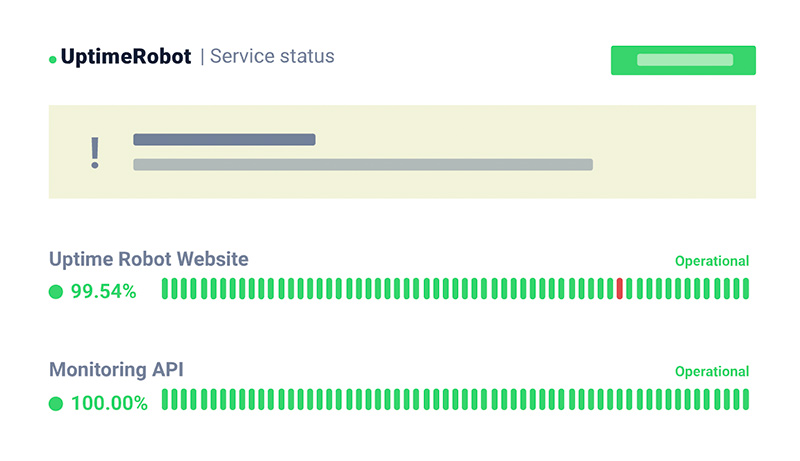
Uptime is the ratio of time that a server, system, or website is operational compared to the total amount of time it COULD be operational.
For example, if a website has an uptime of 99%, that means it was successfully operational 99% of the time in a given period.
While uptime is a computer industry term that is often used in reference to multiple servers, it can also apply to other systems, like power grids or manufacturing plants.
In this article, drawing upon our own experience with uptime, we will delve into the concept of uptime as it pertains to websites. We will discuss its significance, explore factors that impact uptime, and share best practices to maintain high availability and reliability for your website’s users.
With this knowledge, you’ll be better equipped to make informed decisions and manage your website in a way that optimizes its performance and user experience.
Table Of Contents
Quick Summary
- Uptime is a metric tracked by organizations as a statistic to better understand the general reliability of a system. The time that services are available online divided by the total active availability is the best way to define it.
- When a system is working, it is said to be in its uptime; when it is not, it is said to be in its downtime.
- Businesses calculate product uptime using the following formula: Every business strives for 100% uptime, yet the majority will think 99.999% is sufficient to guarantee a positive customer experience.
What Does Uptime Mean?
Uptime is a measure of the time during which a system, such as a server, website, or network, is operational and accessible to users.
Understanding uptime and its impact on your website is crucial, as it involves uptime monitoring, implementing an effective uptime monitoring strategy, and ensuring your hosting company meets the service level agreement (SLA) for uninterrupted website performance.
To understand computer system uptime, it’s helpful to first understand how a website or app is hosted on a server.

When you create a website, you’re essentially creating a bunch of files that need to be stored somewhere.
If you’re wondering what is a server, to simplify it, it is a powerful computer.
When someone wants to view your web pages, they are basically requesting to see those files.
And upon receiving that request, the server sends those files to the person who requested them, and voilà, your website appears in their browser.

Now, website uptime is simply a measure of how often that process is successful.
In other words, it helps you measure, as a website owner, how often your website is available to visitors.
It’s usually expressed as a percentage, like 99%, which means that your website was operational 99% of the time in a period. The other 1% of the period would be downtime, which is when the site is inaccessible due to maintenance or technical issues.
How To Calculate Uptime
Website uptime is calculated by taking the amount of time your website was operational and dividing it by the time frame (absolute value), then multiplying the result by 100 to get a percentage.

Uptime = (Operational Time / Time Frame) * 100
For example, if your website was operational for 500 hours during a period of 3 weeks (504 hours), your website uptime would be:
Uptime = (500 / 504) * 100 = 99.2%
Frequently Asks Questions (FAQ)
1. What Is The Service Level Agreement Uptime Ratio?
The service level agreement (SLA) uptime ratio is the system’s uptime percentage that’s guaranteed by your hosting provider company.

Your SLA or any other real-time service contract will contain information about the uptime percentage you can expect from your cloud providers.
2. What Is Uptime Guarantee?
An uptime guarantee is simply a promise from your hosting service company that your website will have a certain uptime percentage.
3. What Is Normal Uptime For A Site?
A normal uptime for a site is typically around 99.9%.

While the most famous standard is five 9s, or 99.999%, which equals about five minutes of downtime per year.
4. What Is System Uptime In Manufacturing?
Uptime in manufacturing is the ratio of time that a manufacturing plant is operational compared to the total time it could be operational.
For example, if a manufacturing plant has an uptime of 90%, that means it remains operational for 90% of the time in a given period.
5. What Is Uptime Robot?

Uptime Robot is a free real-user monitoring service that provides uptime monitoring solution. The website uptime monitoring service monitors your site and alerts you if it goes down.
6. What Is Machine Uptime?
Machine uptime is the ratio of time that a machine is operational compared to the total time it could be operational.
7. What Does Uptime Mean In Task Manager?
The uptime in Task Manager is the amount of time that your computer has been running since it was last turned on.
8. What Is Uptime Twitch?
Uptime Twitch is the amount of time that a Twitch channel has been live for.
Conclusion
Uptime is extremely important because if your website is down, people cannot view your content or use your services, which will lead to losses in prospective customers’ traffic and revenue.
If you’re looking for a reliable hosting service provider with high availability, we strongly recommend checking Siteground.
They don’t only offer a 99.999% uptime guarantee, but they also offer 24/7 customer support in case you ever do experience any issues.
For more information about web hosting provider visit our guide Everything You Need To Know About Web Hosting: Explained.

